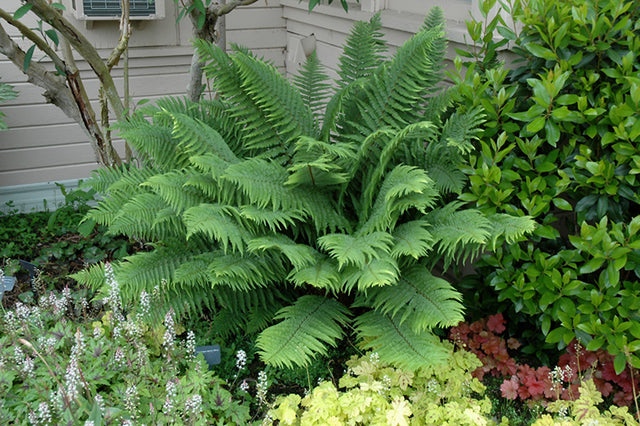Sword Fern will grow to be about 5 feet tall at maturity, with a spread of 4 feet. When grown in masses or used as a bedding plant, individual plants should be spaced approximately 4 feet apart. Its foliage tends to remain dense right to the ground, not requiring facer plants in front. It grows at a medium rate, and under ideal conditions can be expected to live for approximately 15 years. As an evergreen perennial, this plant will typically keep its form and foliage year-round.
This plant does best in partial shade to shade. It requires an evenly moist well-drained soil for optimal growth, but will die in standing water. It is not particular as to soil pH, but grows best in rich soils. It is somewhat tolerant of urban pollution, and will benefit from being planted in a relatively sheltered location. Consider applying a thick mulch around the root zone over the growing season to conserve soil moisture. This species is native to parts of North America, and parts of it are known to be toxic to humans and animals, so care should be exercised in planting it around children and pets. It can be propagated by division.
Details
Botanical Name
Polystichum munitum
Common Name
Sword Fern
Hardiness Zone
- 6
Appearance
Max Height
4 Feet
Max Spread
4 Feet
Plant Form
- Arching
Foliage Colour
- Green
Fall Colour
Flower Colour
Edible
Edible Component
Edible Harvest Period
Edible Use
Fruit Colour
Growing
Flowering Period
Moisture
Moist
Sunlight
Partial Shade To Shade
Maintenance
Low
Deer Resistance
Yes
Get more information about this plant and others with our comprehensive plant finder tool.




